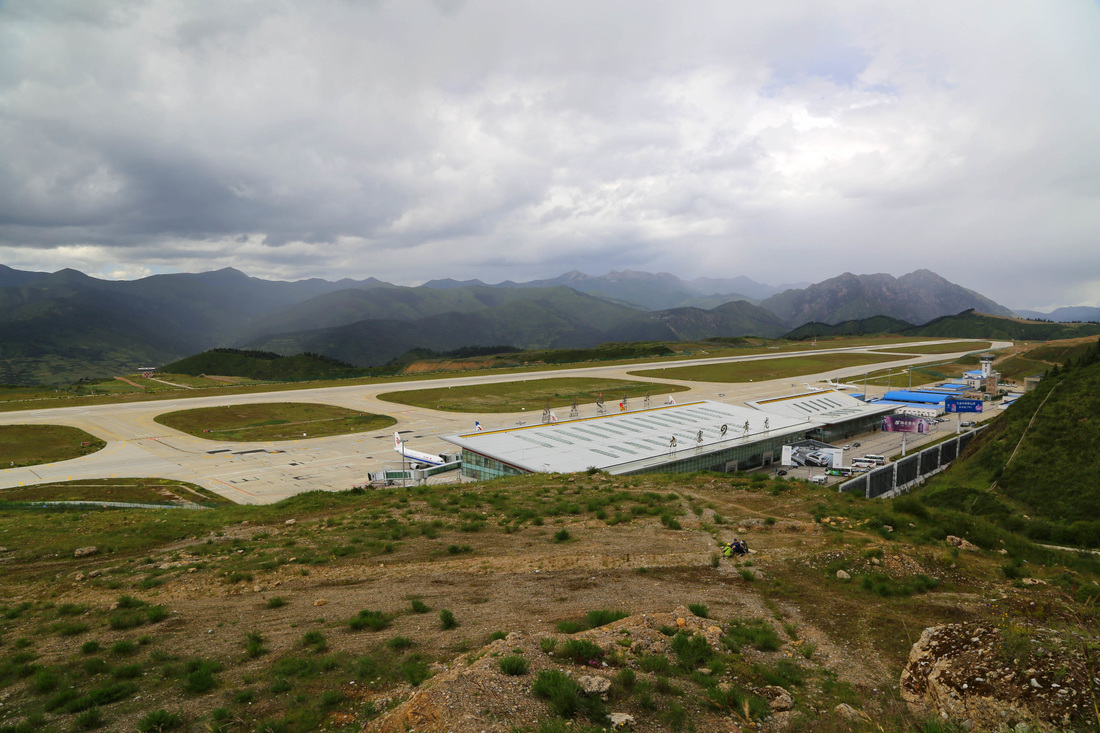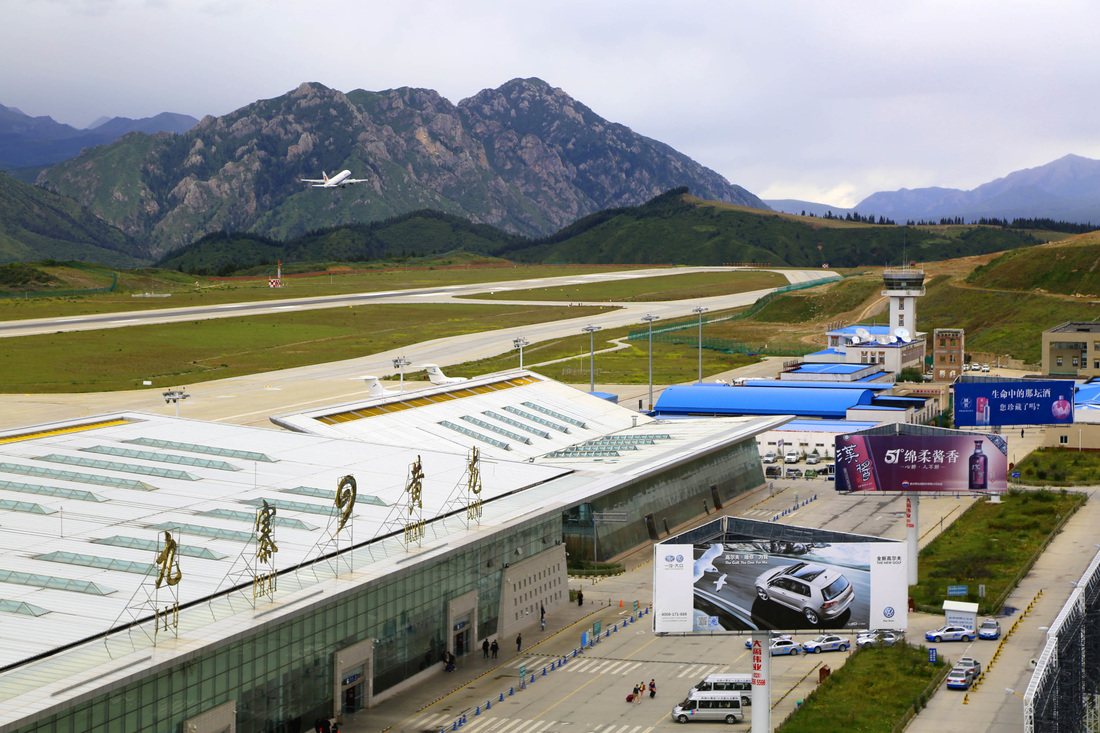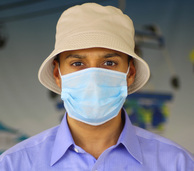|
Having spent five days at high-altitude (at 3,500 meters above sea level), I caught a slight cold and a runny nose. Usually the advice from doctors is that you shouldn't fly when you have a cold because your ears are more susceptible to be blocked. On a short-haul flight from Jiuzhaigou to Shenzhen (via Chongqing), my eardrums took some battering during decent and they just became totally blocked. I couldn't hear anything.
For the first leg of the flight, I felt pretty good at altitude, however when it was time to descend into Chongqing, I experienced the worst ear pain ever. I couldn't hear anything. My head felt as if it’s in a vase, and descending increased the pressure more. Why did this happen? The key way to learn this is to know that a human head has holes in it. These holes include the eight major sinuses, which are paired in either cheek, the forehead, between the eyes, and a deeper pair far behind the eyes. Each cavity holds anywhere from a milliliter to four or five tablespoons of air. Inside our heads, each of our sinus cavities "communicates" with - has an opening to - the nose. This opening, however, is quite small and may be only one millimeter across. Under normal circumstances, this opening is large enough to let air travel freely between its sinus and the lining of the nose. As we gain altitude, the air pressure around us drops so, the pressure inside our sinuses is higher than the outside. The sinuses don't expand like a balloon does because air flows through the communicating channel to the nose, thus equalizing the pressure. The reverse happens on descent. However, the big problem here is that if we have a cold or other upper respiratory infection, the mucous membranes that line the inside of all our airways, swell and become inflamed. When this happens, the tiny communicating channels can easily become blocked. Then, pressure in the sinuses may be great enough to force air out through a narrowed channel, taking bubbling bits of mucous with it. That causes the squeaking sound we hear as the pressure equalizes. This swelling and inflammation acts like a flapper valve. It lets air out, but it doesn't let air back in. The pain was excruciating- it felt like the end of the world. To open the Eustachian tubes under normal circumstances, use the Valsalva maneuver. I did what you should do- that is to pinch my nose shut, close my mouth, and tried to exhale gently through my nose. It should have forced the pressure into both ears and I should have felt my eardrums pop. It sadly didn’t work. The pressure differential - increasing ambient pressure causing low pressure in the sinuses - can be so great that the sinus lining literally can be ripped right off the bone. For the eardrum to vibrate properly, air pressure on both sides has to be equal. The Eustachian tube connects the middle ear to the back of our throat. As we gain altitude, air can spontaneously bubble out of the middle ear. The small muscle in the back of the throat acts like a flutter valve. During descent, the muscle must hold our Eustachian tubes open, which allows air to pass through them and equalize the pressure in our middle ears. If we can't do this, the outside pressure can push the eardrum inward enough that it might rupture. And, that’s exactly what happened to me. A ruptured eardrum will usually heal on its own in two to three weeks. But I didn’t have the luxury of waiting two or three weeks at the ground. My next flight was to Kuala Lumpur in two days and then after three days in Kuala Lumpur I was expected to fly to Kathmandu (again at high-altitude), and then after a week in Kathmandu, I had a 12-hour flight to London! I decided to go and see the doctor in the Accident & Emergency department of the local expat hospital in Shenzhen, and have my ears checked out. The doctor used sound therapy to clear the ears- took less than 10 seconds and cost about US $20. Basically he pushed a tiny pipe into the eardrum and with a couple of ‘bleep’ sounds, the air was cleared. With antibiotics in hand for the next six days, the only piece of advice was: “Navjot, don’t fly for at least two weeks”. I had no choice it seems. Just hoped that it would not happen again! Jiuzhaiguo Airport...at 3,500M above sea level, it is the 3rd highest in China and with straight cliffs at each side of the runway ends. No night-time landings/take-offs. The airport is built on three mountains...and is relatively new (2008 if I'm correct). It's amazing how China sliced off the top of three mountains to make an airport...would never happen in the West (well..it would take years /decades to get planning permission!). Closed to outsiders until a generation ago, Jiuzhaigou has come a long way since the 1990s. It is a spectacular national park located in the village of Jiuzhaigou, comprising of natural sulphuric lakes at around 9,500 feet above sea level in rural Jiuzhaiguo valley. The view is truly spectacular and upon first sight you just want to dive in and swim but obviously you can't because the water is so toxic. The sapphire- and emerald-tinted waters of the park are the result of dissolved limestone, and high concentrations of calcium carbonate are responsible for the lakes’ crystal clarity. This is one of the loveliest places on earth. The lushness of the mountain, the willows hanging down over the lakes, the gently moving water lilies, the faint white mist hanging over the limpid surface. Steeped in history, the modern world brings tourists in their millions, from Beijing, Shenzhen, from Japan, and from Germany, Britain, and Korea, to a place which the emperors once reserved for themselves. As a travel snob, I am glad I can travel throughout China, yet I can't help remembering when it was next to impossible to get to a place like Jiuzhaigou. Despite the tourists, despite the sudden modernization of almost everything in China, despite the rapid destruction of its alleyways and wooden houses, China's history is a continuum. The distant past seems very close at Jiuzhaigou — worth every penny. I first heard about the place when, one summer's afternoon in Shenzhen, during a conversation with another journalist. "You have been in China for 12 years and you have never been to Jiuzhaigou?!" "Go now...quick; it won't stay undiscovered for long." He was absolutely right. It is best to go early in the morning and avoid the national holidays to Then there are also the fairy lakes, which are located quite high up...takes three hours to drive...not many foreign tourists come here, not only because it is difficult to get to, but also because if you cannot converse in Chinese then it is very difficult to get around, and the place isn't really sold to foreigners as a tourist destination. It is therefore, hidden gem. Jiuzhaigou, formed in large part by glacial avalanching, covers an area of 720sqkm and is made up of three valleys arranged in a “Y” shape. Each valley is composed of lakes and waterfalls with names like Tiger Lake, Double Dragon Lake, Arrow Bamboo Falls and Pearl Shoals Falls. My first impressions were that it is one of the cleanest parts of China. It is well-kept by the locals, with roads and lakes all in pristine condition. On the drive down, my ears popped due to the pressure changes...nevertheless, it is an amazing place to visit. SEE MORE PHOTOS Some Tips
 The Upper Seasons Lake serves as a watering hole for the yaks tended by the Tibetan villagers who live inside the Jiuzhaigou borders. Among the park’s other wildlife species are golden snub-nosed monkeys, hog badgers, musk deer, lynx, civets, the littler red species of panda and rhesus macaques: Photo Copyright Navjot Singh Probably not. The Swastika has been used since the dawn of time and is still used in many religions, including Buddhism, Hinduism, Jainism and by Vietnam's Cao-Dais. Contratry to popular belief, religion is actually allowed to be practised in China- just don't go around preching about it! Tibetans are mostly Buddhists, and Jiuzhiagou has a large popualtion of Tibetans (as well as the whole of Sichuan province): Photo Copyright Navjot Singh
Tibetan driver can't understand my Chinese...going to the hotel in the middle of nowhere...5,000ft above sea level...on the plus side...nice to breath fresh cool air!! After a short 35-minute flight from Chengdu, arrived in Jiuzhaiguo...from 30 degrees Celsius to 5 degrees Celsius, with Jiuzhaigou being 3,500 metres above sea-level and the third highest airport in China. I forgot my jacket. But thankfully, the airport is well-equipped for such emergencies and one can easily purchase a nice thermal jacket for around 70 RMB (USD $14). The same jacket in the West could cost anything over ten times the price. Interesting airport...as soon as the baggage arrived everyone opened their bags at the carousel and changed into winter attire...I bought myself a nice thermal jacket from a local Tibetan shopkeeper (my first encounter with a Tibetan person!)...amazing jacket cost only about US 12 (I'm sure the same jacket would be much expensive in the West)...night-time temperatures drop to -2 degrees Celsius in the mountains. |
Get in Touch:LIFE MATTERSHere I share my thoughts
and experiences during my travels, and how some things have affected my life as an expat and world traveller. Travelling is about capturing that moment in life. Every word, view and opinion on this page is that of Navjot Singh - except where indicated. The most recent is at the top. Scroll down to read the archive. Or search using CTRL+F (COMMAND + F) and enter a keyword to search the page. Just some of the stories you never heard before. The NAVJOT-SINGH.COM web blog is separate to this web site....Click blog, which may not be visible in some countries due to local firewall restrictions, so in those cases this weblog may be read. The weblog also includes some of my press trip reports- most of which are not published on the official blog because of copyright issues. The weblog also contains articles that may be associated directly with a PR trip for a country, airline or a hotel. These are PR reviews done in relations with various companies. If you are an investor or a trend watcher then you may find this website useful as investing has a lot to do with personal observations and finding the ideal trend or next big thing. The average human on the street frequently knows far more about the state of the economy than politicians, university professors, subject matter experts, and financial analysts who seldom travel, or if they do so, only from one hotel to another hotel! The pulse and vibrancy of an economy is nowhere more visible than on a country's streets. All photos and words are © Navjot Singh unless stated. Photos taken by others or by agencies are appropriately copyrighted under the respective name. No photo or word/s may be taken without the prior written permission by the author (i.e. Navjot Singh). All Rights Reserved. Archives
April 2024
Categories
All
|


























 RSS Feed
RSS Feed







